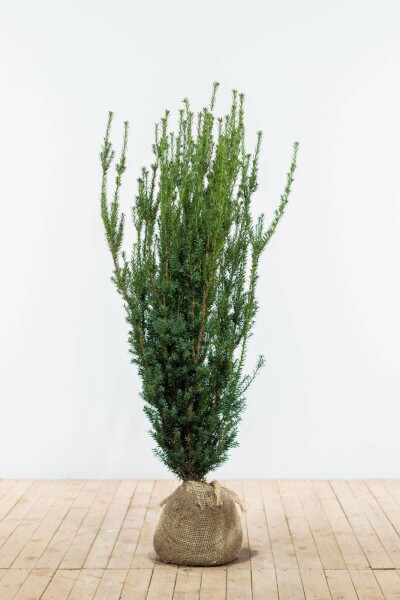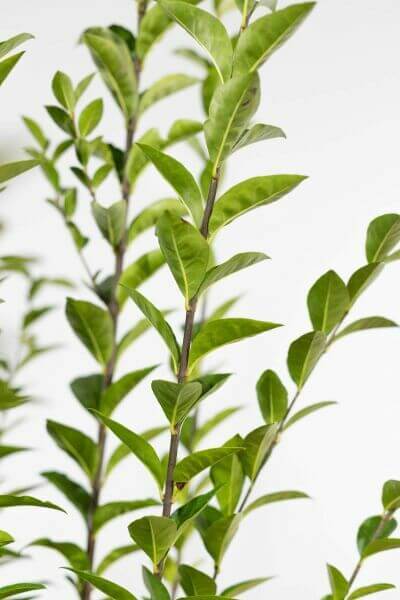Hedge Plants For Green Walls
Boost your garden's appeal with lush hedge ranges such as Yew (Taxus), Thuja, Laurel, Photinia, and Bamboo, celebrated for their structural integrity and ecological advantages.
Yew and Thuja offer evergreen protection and winter durability, while Laurel offers quick growth and broad, aromatic leaves.
Photinia includes seasonal charm with its dynamic red foliage, and Bamboo provides a low-maintenance, peaceful atmosphere.
These hedges enhance air quality, decrease sound, and produce tranquil, personal spaces.
Appropriate planting, spacing, and upkeep make sure energetic growth and eco-friendly harmony.
Explore how these lush varieties can raise your garden's beauty and well-being.
Secret Takeaways
Change Your Garden With Lush Hedge Ranges
- Select Yew for its thick, evergreen development and exceptional durability.
- Opt for Laurel for its fast growth and broad leaves, making sure fast personal privacy.
- Pick Photinia for its vibrant seasonal foliage, which turns a striking dark red.
- Make use of Bamboo for a low-maintenance, winter-hardy hedge with aesthetic appeal.
- Space plants 2-3 per meter and prune frequently for optimal development and health.
Popular Hedge Plants
When transforming a garden with lush hedge ranges, it's vital to think about popular hedge plants such as Yew, Thuja, Laurel, and Photinia due to their special attributes and benefits.
Yew (Taxus) is highly esteemed for its durability and thick, green development, making it a prime choice for enduring landscapes.
Thuja is noted for its evergreen foliage and robust winter season resilience.
Photinia includes seasonal vibrancy with red leaves that darken over time, developing dynamic visual appeal.
Laurel provides quick growth and aromatic, broad leaves, ideal for quick personal privacy.
In Addition, Bamboo is an outstanding option for ambiance, providing a low-maintenance, winter-hardy choice that boosts the garden's aesthetic with its stylish, swaying canes.
These selections accommodate a range of horticultural requirements and preferences.
Benefits of Garden Hedges
Garden hedges provide a wide variety of advantages, making them a valuable addition to any landscape. These natural barriers are cost-efficient to implement and offer considerable wind defense, boosting air circulation and adding to noise reduction. The dense foliage of hedges like Thuja and Beech makes sure personal privacy by obstructing visibility, developing a remote and tranquil environment.
Hedges also play an essential role in microclimate regulation, offering a stable environment that cultivates plant growth and decreases temperature variations. Their elaborate leaf structures filter toxins, enhancing air quality and contributing to a much healthier garden ecosystem.
Furthermore, hedges stand out in noise reduction, soaking up and deflecting sound waves to lower ambient noise levels. This double performance of providing both acoustic and visual personal privacy enhances the general serenity and aesthetic appeal of any garden.
Planting and Maintenance Tips
For an effective hedge, careful preparation of the planting location is essential. Guarantee the soil has appropriate pH and drain to support strong root advancement.
Space the plants appropriately for the chosen species. Water the hedge often throughout its preliminary development stage, changing as required with seasonal modifications.
Carry out a methodical bug control and illness avoidance method, utilizing chemical or natural treatments when essential. Regularly inspect for aphids, mites, and fungal infections.
Apply mulch to keep moisture and suppress weeds. Seasonal pruning promotes dense growth and air blood circulation, essential for plant health.
Following these guidelines will assist you cultivate a dynamic, well-maintained hedge that enhances the beauty of your garden.
Spacing and Trimming Standards
Spacing and Cutting Guidelines
Appropriate spacing and trimming are crucial for cultivating healthy, aesthetically appealing hedges. Appropriate spacing guarantees each plant receives sufficient nutrients, light, and air flow.
Follow these guidelines for optimal hedge upkeep:
- Spacing: Position hedge plants 2-3 plants per meter to motivate robust growth.
- Pruning Techniques: Routine pruning is vital for preserving desired hedge height and shape. Cut new growth in summer season and cut back older wood throughout winter season.
- Seasonal Care: Adjust cutting schedules and techniques according to seasonal requirements to make sure plant health.
- Hedge Height: Routinely monitor and cut to maintain the wanted hedge height and accomplish consistent aesthetic appeals.
Complying with these actions will ensure your hedge flourishes, improving both the appeal and functionality of your garden.
Selecting the Right Hedge
Choosing the Right Hedge
Selecting the proper hedge involves examining factors such as fully grown height, foliage density, and ecological resilience. Effective hedge plant choice requires understanding each species' development characteristics and site-specific versatility.
For instance, Yew (Taxus) offers outstanding longevity and thick growth, while Thuja is significant for its winter durability. In addition, thinking about maintenance requirements is essential; fast-growing types like Laurel or Privet need routine cutting, whereas low-maintenance options like Bamboo or Ivy might be more suitable for those looking for very little maintenance.
Ecological aspects such as soil type, light schedule, and moisture conditions should also direct the choice procedure. This mindful approach ensures the chosen hedges will thrive, providing both functional and aesthetic benefits to the garden landscape.
Delivery and Planting Guidance
To ensure your hedge plants flourish, they should be delivered by specialized carriers and planted quickly upon arrival.
Follow these important steps for effective planting:
- Soil Preparation: Improve the soil with raw material to enhance drainage and nutrient content.
- Planting Depth: Develop a trench two times the width and equivalent to the depth of the root ball.
- Watering Strategies: Water thoroughly after planting, keeping the soil consistently wet however not saturated.
- Mulching: Apply a layer of mulch to retain wetness and suppress weeds.
Customer Assistance and Service
Given the essential role of prompt support in horticultural pursuits, our customer assistance group is readily available 6 days a week through telephone, email, and social networks to provide expert advice and quickly address any concerns. Their dedication to fast response times makes sure client satisfaction by fixing queries connected to plant health, optimal planting approaches, and maintenance schedules.

Response Time
-------------------
Social Media
This comprehensive assistance system, reinforced by an excellent 9.3/ 10 client rating, highlights our dedication to improving the gardening experience for every client.
Frequently Asked Concerns
For How Long Does It Take for Hedge Plants to Develop?
Hedge plants normally require one to 3 years to become fully developed, with the precise period varying by types and growing conditions.
Efficient care throughout this crucial duration is important for robust development. Consistent watering, alert weed control, and appropriate fertilizer application are critical in promoting strong root development.
For example, fast-growing types like Laurel may develop more rapidly, while slower-growing varieties such as Yew may take longer. Diligent maintenance speeds up the facility process, leading to thick and healthy hedges.
What Are the Best Hedge Plants for Personal Privacy?
The question of the very best hedge plants for personal privacy includes evaluating evergreen and deciduous choices.
Evergreen hedges like Thuja, Laurel, and Cypress supply year-round protection, ensuring constant personal privacy.
In contrast, deciduous hedges such as Beech offer seasonal personal privacy, shedding leaves in chillier months.
Secret maintenance tips for privacy hedges include routine trimming, fertilizing in spring, and proper spacing-- generally 2 to 3 plants per meter.
Furthermore, consistent watering and diligent weed elimination are vital for promoting healthy, thick growth.
Can Hedge Plants Attract Wildlife to My Garden?
Yes, hedge plants can bring in wildlife to your garden by supplying important here benefits like shelter, food, and nesting websites, consequently enhancing regional biodiversity. For example, yew, holly, and laurel are outstanding for attracting birds, while ivy supports a range of insects.
Nevertheless, it is necessary to keep in mind that there are some disadvantages, such as increased upkeep to manage bugs and regular upkeep. Thoroughly picking and maintaining hedge ranges can help stabilize these downsides and benefits, eventually cultivating a dynamic and sustainable ecosystem in your garden.
Exist Any Blooming Hedge Plants Available?
Yes, there are flowering hedge plants available that can improve the appeal of your garden.
For example, Elaeagnus, likewise understood as Olive Willow, produces fragrant white flowers in the fall, adding a touch of sophistication.
Photinia, another popular choice, showcases vibrant red leaves that develop into an abundant green, creating a dynamic visual impact throughout the seasons.
To make sure these plants thrive, it's vital to practice correct pruning strategies and seasonal maintenance, such as trimming new development in the summer season and cutting back in the winter.
These steps will help preserve the health and visual appeal of your blooming hedges.
How Do I Prevent Pests in My Hedge Plants?
To prevent pests in hedge plants, utilize natural insect control techniques and preserve correct hedge care. Present helpful pests like ladybugs, which prey on harmful pests, to create a balanced ecosystem.
Regularly inspect your hedges for signs of infestation and quickly eliminate any affected parts to prevent the spread. Ensure the health of your hedges by applying balanced fertilizers and supplying appropriate water.
Make use of mulching to retain soil wetness and correct spacing to lower plant tension and promote robust development. These practices collectively help in minimizing pest concerns and keeping a healthy hedge.
Conclusion
In essence, selecting the best hedge varieties such as Yew, Thuja, and Laurel can transform any garden into a serene sanctuary. These plants offer year-round greenery, boost visual appeal, and offer practical advantages like sound reduction and wind defense.
Correct planting methods, accurate spacing, constant watering, and seasonal trimming are vital for optimum growth.
Trustworthy delivery services and expert consumer assistance guarantee a seamless experience from purchase to planting, making it easier than ever to elevate your outside space.
Garden hedges offer a wide variety of benefits, making them an important addition to any landscape. These natural barriers are economical to implement and supply considerable wind defense, improving air circulation and contributing to sound decrease. The dense foliage of hedges like Thuja and Beech makes sure privacy by blocking exposure, developing a secluded and peaceful environment.

Pruning Techniques: Regular pruning is essential for keeping preferred hedge height and shape. Trim brand-new development in summertime and cut back older wood during winter season.
Comments on “Hedge Plants For Security And Privacy”